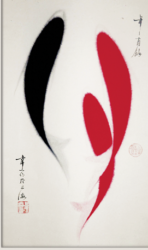- What is acupuncture?
- Does acupuncture hurt?
- What makes that sensation?
- Are the needles clean?
- Are there different styles of acupuncture?
- Are there any side-effects from acupuncture?
- How does acupuncture work?
- What is Community acupuncture ?
Neither acupuncture style is the same as medical acupuncture given by a doctor, nor dry needling performed by an unregistered or non-endorsed practitioner. Since the passing of the Health Practitioner Regulation National Law Act 2009, a practitioner must be registered in their own right, or endorsed by their own board if already registered in another discipline, to call themselves an acupuncturist (or Chinese herbalist).
( See http://www.ahpra.gov.au/Registration/Registers-of-Practitioners.aspx to see if your practitioner is registered or endorsed by their own Board) . Only qualified people can be registered or endorsed.) .
DO NOT ASSUME that anyone who uses acupuncture needles, is qualified or registered – regardless of what they call it- e.g needles, dry needing or do not call it anything in particular, yet you notice they pull needles out of an “acupuncture needles” labeled box! Courses given in Australia range from as little as two days for dry needling, 300 hours for medical doctors to get medicare rebates, through to four years for Traditional Chinese Medicine Practitioners (or five years for double CM degrees).
The only side effect from using the Balance Method of acupuncture , is that the pain relief does not last. It needs to be repeated regularly until the brain learns that the needle is not a noxious signal, so the location fibres remain switched on. (See below for more detail – how does acupuncture work? ).
IF you feel no benefit after needle removal, then acupuncture can’t help you . You need to be assessed by a medical doctor.
When you feel pain relief, please note- you are NOT healed with one session. You must rest your injured body part. Acupuncture is not a substitution to keep you doing the same thing that injured you. It takes time to restore full function .
Sometimes the needle site may bleed, bruise or feel itchy. Tell your practitioner if you are uncomfortable so they can try to improve your experience.
For acupuncture effect on moderating pain, it can be explained in another way, according to western physiology. Pain is registered by the brain through nerve receptors. When working correctly, one nerve fibre tells the brain that pain exists, the other nerve fibre tells the brain where the pain is. If both fibres are working correctly, then the brain releases chemicals that cascade though number of biochemical pathways- the effect being the release of the body’s own pain relief chemicals. In chronic pain however, the fibre that locates the site of pain is switched off. As the brain doesn’t know where the pain is, it can’t deliver its own pain relief. Acupuncture works to switch the site signal back on so the brain delivers its’ own pain relief.
Community open group acupuncture allows a number of people to be treated in turn in the same space, seated on chairs, so the cost is reduced for each participant. The community sessions are express, minimal talking, maximum sitting chilled !
Because Shelley Beer has had over 30 years experience she can quickly devise traditional Chinese treatments based on the presenting complaint. She may press points on your body for soreness or information. She may ask a few clarifying questions, inspect your tongue, then decide the most appropriate points to use. Sitting on chairs, means choosing points mainly on the legs , upper body and head. The group setting allows everyone present to be coached with lifestyle advice at the same time. Group healing for a fraction of the cost.
